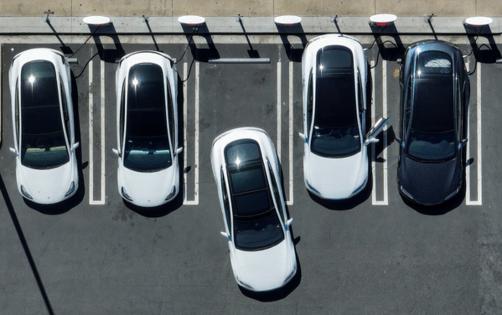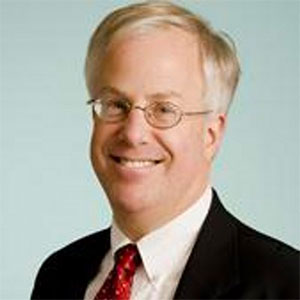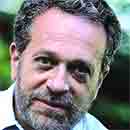Trump's EPA puts California in its crosshairs with its proposed car rules
Published in Political News
The U.S. Environmental Protection Agency’s recent proposal to repeal its own 2009 finding that greenhouse gas emissions endanger public health marks a major U-turn for the nation’s climate progress. While it’s impact will be felt nationwide, the plan takes direct aim at California.
In supporting documents released in the wake of Tuesday’s proposal, the nation’s top environmental agency outlined the justifications for its plan to rescind the so-called endangerment finding and roll back its longstanding regulations for planet-warming greenhouse gas emissions from all motor vehicles, including cars and trucks.
“As a result of these proposed changes, engine and vehicle manufacturers would no longer have any future obligations for the measurement, control, and reporting of (greenhouse gas) emissions for any highway engine and vehicle,” the agency wrote in its rule summary.
But the documents, including an 80-page notice of proposed rulemaking and 60-page draft regulatory impact analysis, also contain several nods to California policies, referencing the state by name 27 times — by far more than any other state.
That’s largely because for more than 50 years, California has been granted unique authority from the EPA to set stricter tailpipe emissions than those mandated by the federal government.
This authority, obtained through waivers issued by the EPA, has been critical to the state’s efforts to address its notorious smog and air quality issues, which are driven partly by transportation emissions and by California’s unique topography that traps pollutants in its interior basins. The waivers were also the basis for California’s nation-leading plan to ban the sale of new gasoline-powered cars by 2035 and transition to electric vehicles.
The EPA’s documents repeatedly state that California’s waivers have officially been repealed. As of publication, however, the Trump administration’s unprecedented effort to do so in June is still winding its way through the court system following a lawsuit from the state.
Notably, the EPA’s own analysis of the possible outcomes of its proposal indicate that without California’s leadership — and without the tax credits created under President Biden’s Inflation Reduction Act — national adoption of electric vehicles will decline. At the same time, gasoline prices will increase because of the higher demand from more gas-powered vehicles on the road.
“They don’t seem to have put together that strong of a case,” said Chris Busch, director of transportation and a senior economist with Energy Innovation Policy & Technology, a nonpartisan think tank, who reviewed the analysis. “What this shows is that the net impact is less favorable when you reduce the California (Advanced Clean Trucks rule), when you take away the California waivers and remove the IRA credits.”
In a statement this week, EPA administrator Lee Zeldin said repealing the endangerment finding would have economic benefits for the American people. “If finalized, rescinding the Endangerment Finding and resulting regulations would end $1 trillion or more in hidden taxes on American businesses and families,” Zeldin said.
According to the EPA, that $1-trillion savings would come from rescinding vehicle regulations built upon the endangerment finding. That includes the Biden administration’s electric vehicles sales target, which the agency refers to as an “EV mandate.”
The EPA also said removing the endangerment finding would save Americans $54 billion in costs annually through the repeal of greenhouse gas standards.
Busch said he could not readily see how the agency arrived at that figure based on the analysis provided. With California’s rules repealed, “you end up with fewer EVs, more gasoline cars, more demand for gas and higher gas prices,” he said.
The EPA also argues that electric vehicles are sucking up energy that could be better used elsewhere — “from factories to data-center servers to air-conditioning.” It uses California as an example of this perceived misappropriation of electricity, pointing to a 2022 memo from the California Independent System operator that urged people to reduce energy use, including EV charging, during a record-breaking heat wave.
The EPA’s announcement stunned many members of the environmental community who condemned it as a dangerous abdication of the agency’s mission to protect human health and the environment. Among the agency’s many claims are that no technology currently exists to reduce greenhouse gases enough to measurably affect global climate change concerns without risking greater harm to public health and welfare, such as increased vehicle prices.
But major U.S. automakers such as GM and Ford have already committed to an electric future — as have international competitors such as China, which is investing heavily in electric vehicles. According to the California Energy Commission, about 22% of new vehicles sales in the state in the second quarter of this year were zero-emission vehicles.
“Despite Trump’s full-on attack, Californians are choosing the clean simplicity of ZEVs,” read a statement from CEC Commissioner Nancy Skinner. “Make no mistake: California is not backing down from its ZEV goals. We will continue to heavily invest in accessible and reliable ZEV infrastructure, making the ZEV driving experience better each day.”
Busch said California has several tools at its disposal to defend itself and preserve its clean vehicle progress.
In the heavy-duty space, the California Air Resources Board already has the Clean Truck Partnership— an agreement with nearly all truck manufacturers in the state to meet advanced emissions reduction targets. The state’s heavy vehicle incentive program also provides funding opportunities for fleet owners to replace older heavy-duty diesel vehicles with zero-emission ones.
There are also legislative possibilities, such as Assembly Bill 914, which would give CARB more authority to regulate indirect sources of pollution such as warehouses. One way those warehouses could meet those rules would be by increasing their electric truck fleets, Busch said.
CARB also employs a clean-mile standard for transportation companies such as Uber and Lyft, which will see them gradually increase their zero-emission miles, and a similar tactic could be employed for the freight sector, he said.
“States have a lot of options still,” Busch said. “There is a lot of momentum.”
In a statement this week, CARB chair Liane Randolph described the EPA’s proposals as “the latest moves from this feckless federal government that choose polluter fantasyland over proven science.”
“Meanwhile, back on Earth, the planet continues to suffer from the consequences of unchecked carbon pollution as heatwaves, floods and wildfires threaten increasingly uninsurable communities everywhere,” Randolph said. “Unlike this negligent administration, California won’t turn our backs on what is happening right before our eyes. We choose reality, science and innovation — and we know we are not the only ones.”
©2025 Los Angeles Times. Visit at latimes.com. Distributed by Tribune Content Agency, LLC.

























































Comments